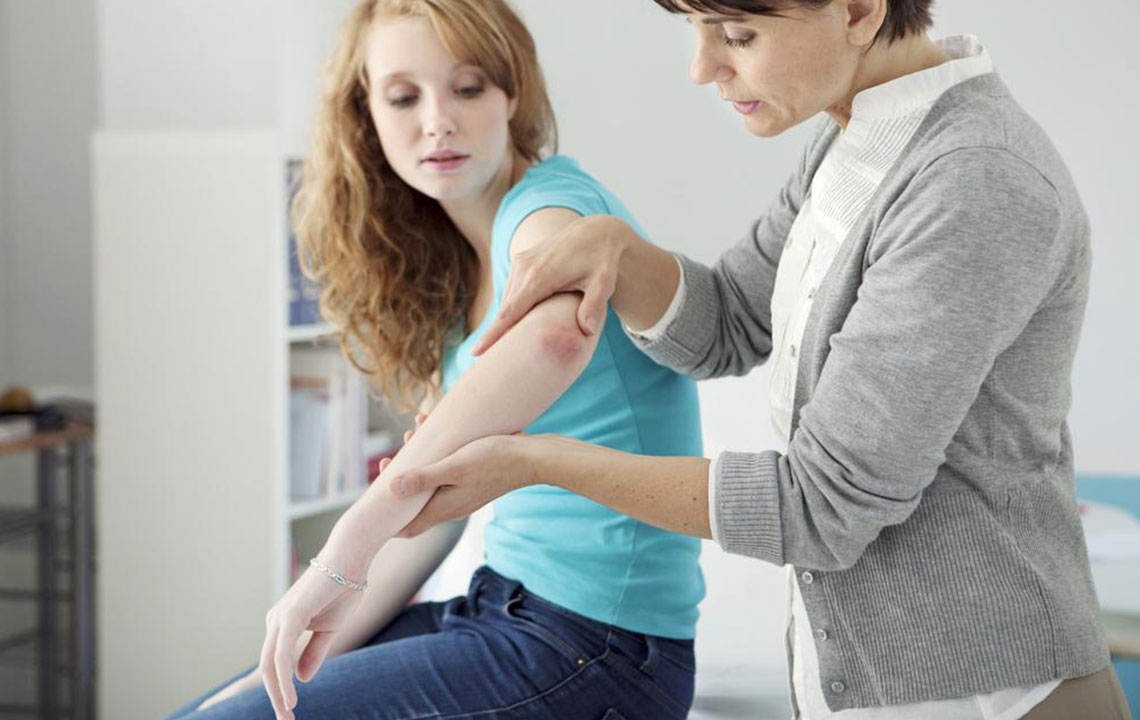Psoriasis and Available Treatment Options

What is psoriasis? It is a completely irritating and unpredictable disease. You can also describe it as one of the most persistent skin disorders, and the main characteristics of this disease is that skin cells multiply up to 10 times faster than normal. Since the underlying cells that get onto the surface of the skin die, you experience an extreme hike in their volume and the red plaques get covered with white scales. The most vulnerable areas for psoriasis are the scalp, elbows, and knees. You can also find them in the sole, palms, and torso. A large number of people are always on the quest for authentic information about psoriasis.
Leading psoriasis symptoms
Psoriasis patients often have to deal with red skin plaques, and they are covered with silver-colored, loose scales. The lesions become excessively itchy, and you have to deal with a lot of pain. Cracking and bleeding sometimes occur in the lesions, with chronic conditions, the plaques grow fast and even merge into one another. It may get spread into large areas as well. Toe and fingernail disorders such as nail pitting and discoloration are also symptoms of psoriasis; moreover, with the passage of time, the nails may crumble or detach from the nail bed. People who suffer from this condition often have plaques of scales on their scalp. Psoriasis can be linked to psoriatic arthritis, which results in swelling and pain in the joints. Various research studies show that 10% to 30% of people suffering from psoriasis also face psoriatic arthritis-related problems.
Psoriasis can be described into different categories.
Pustular psoriasis
The most prominent characteristics of this skin condition are scaly and red skin on the hands or palms. They may even appear on the feet with small pustules.
Guttate psoriasis
This form of psoriasis often begins in young adulthood or even in childhood. The major signs of this version are tiny red spots on the limbs and torso. The most common triggers of guttate psoriasis are skin injury, use of a beta blocker or anti-malarial medication, stress, tonsillitis, strep throat, and respiratory infections.
Inverse psoriasis
When you have inverse psoriasis, you can find shiny and bright red lesions on skin folds such as under the breasts, groin areas, and armpits.
Erythrodermic psoriasis
The most common character traits of this type of psoriasis are fiery redness of the skin in a periodic manner and scale shedding in sheets. Major triggers include infection, specific medications, severe sunburn, and withdrawal from systemic psoriasis treatment. It is always advisable to consult a doctor for treating this type of psoriasis. If it remains unattended, you may have to deal with severe health problems.
How to get rid of the patches and red skin?
Psoriasis can become uncomfortable, and the treatment options for this disease are pretty limited. This skin condition has a cyclic nature, and it appears and disappears in cycles of remissions and flare-ups. There is no conclusive evidence and information on curing psoriasis completely; you can make use of medications, creams and other therapies for clearing up the red patches and red skin.
Treatments for psoriasis
Topical treatments are used to bring instant relief, and they are directly rubbed onto the affected area. The most common topical treatment is salicylic acid, a good number of dermatologists advise people to use a salicylic-acid ointment for smoothening the skin. It makes the scale shredding process faster. Another popular option is steroid-based creams as they effectively reduce inflammation and itching. When you use these types of creams, you should seek the help of a dermatologist for insight and information on psoriasis. Calcipotriene or calcitriol contains vitamin D, which is a good option to treat psoriasis. You can combine calcitriol with a topical corticosteroid cream to enjoy the best results. Several people are making use of coal-tar ointments and shampoos; they are capable of slowing down the speedy growth of skin cells.
Prescription retinoids are another option; they contain a synthetic version of vitamin A to help improve the condition. These preparations offer good results and may cause some irritation on the skin. Doctors also prescribe oral drugs like methotrexate to bring fast relief to this condition, and the lesions can be easily cleared. Do consult your doctor for more information before going ahead with these medications for psoriasis. There are oral retinoids, and you can find biologic drugs for treating psoriasis. Light therapy can also be used to find relief, and, if you are interested, you can make use of some of the herbal remedies. These natural treatments also offer good results. They include aloe vera, fresh oil and Dead Sea salts. The internet offers a lot of psoriasis information, and you can go through these details to arrive at the best conclusion about the most suitable treatment.


